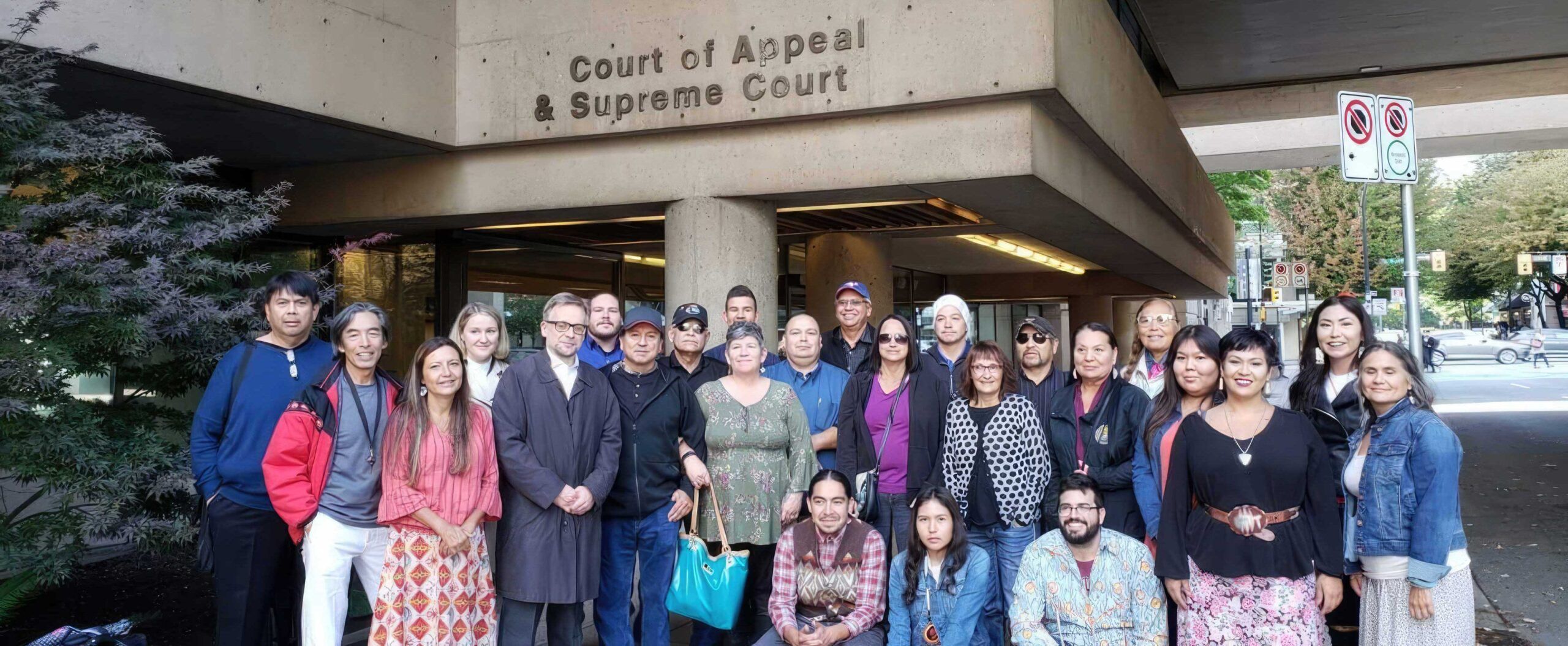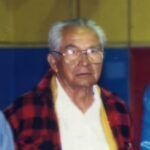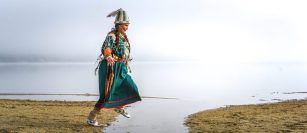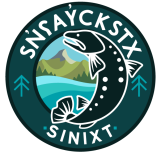The Desautel Decision

The Roots of the Desautel case
 In the 1970s, Sinixt elder Charlie Quintasket travelled from the Colville Confederated Tribes Reservation to the B.C. Provincial Museum in Victoria, B.C. There, he asked why B.C. was not acknowledging his tribe. He never received a satisfactory answer.
In the 1970s, Sinixt elder Charlie Quintasket travelled from the Colville Confederated Tribes Reservation to the B.C. Provincial Museum in Victoria, B.C. There, he asked why B.C. was not acknowledging his tribe. He never received a satisfactory answer.
After the disturbance of ancestral burials in Vallican in the 1980’s, we Sinixt and allies stood on the line to try to secure the remains, so that we could return them to rest.
The provincial government initially refused to turn our ancestors over to us, because we were not recognized as Indigenous people in Canada. This great injustice stirred us into action to finally correct the historical wrongs visited on our ancestors.
We spent many years learning about the Canadian legal system and considering our options. Finally, a “test case” was launched, to seek a confirmation of our Aboriginal rights under Section 35 of the Canadian constitution. We sent Rick Desautel, a Sinixt ceremonial hunter, north to hunt an elk. After reporting his unlicensed hunting to wildlife officers three times, he was finally charged in 2010.
He pleaded “not guilty,” based on his status as a Sinixt hunter with rights in Canada. The trial took place in the fall of 2016, in Sinixt territory at the Nelson, B.C. courthouse.
The “Crown,” or B.C. Government, led a case that suggested we had ‘enthusiastically moved south out of our Canadian lands to become farmers.’ Several Sinixt cultural leaders spoke eloquently to the contrary. Read excerpts from their testimonies:
- Cody Desautel, who has worked for the Colville Confederated Tribes for most of his career, talks about what it means to be Sinixt
- Richard Desautel describes his training and practice as a ceremonial hunter
- Michael Marchand, former Colville Confederated Tribes council chair and grandson of Mary Marchand, talks about the importance of retaining cultural identity
- Darlena (Doll) Watt speaks about Sinixt culture and her traditional lifestyle
- The cross-examination of a B.C. government expert witness on day 11 discusses the 1896 Game (Amendment) Act, its long-standing effects.
Trial Decision
On March 27, 2017, Judge Lisa Mrozinski of the B.C. Provincial Court acquitted Rick of all charges under the Wildlife Act – on the basis that he was exercising a constitutionally protected right to hunt in Sinixt traditional territory. The judge confirmed that the Sinixt were an Aboriginal Peoples of Canada, having occupied their traditional territory before the arrival of Europeans. She also confirmed that we did not voluntarily leave our territory. From the evidence filed by both the Province and Rick Desautel, the trial judge accepted that the traditional territory of the Sinixt ran from Kettle Falls in Washington State, north beyond Revelstoke B.C. to the “Big Bend” of the Columbia.
This landmark decision washed away the 1956 “declaration of extinction” and opened the door for the Sinixt people to engage in meaningful reconciliation with various levels of government in Canada.
The decision specifically held that the Sinixt people who are members of the Arrow Lakes Tribe of the Confederated Tribes of the Colville Reservation are a “rights holding successor group.” See modern governance for more.
The Province of B.C. (called “the Crown” in the courts) appealed the judgment three times.
First Appeal
Second Appeal
On May 2, 2019, a unanimous three-member panel of the B.C. Court of Appeal dismissed the Crown’s argument that Indigenous people can only hold rights if they live today in the same area as their ancestors did. The court found that such an argument ignored the Aboriginal perspective and the realities of colonization.

Third and Final Appeal
The Crown appealed to the Supreme Court of Canada (SCC), the highest court in Canada. On April 23, 2021, a seven-member majority upheld all the lower court findings. The SCC was clear: because the Sinixt had been forced out of Canada, to not include them today as an Aboriginal Peoples of Canada would risk “perpetuating the historical injustice suffered by aboriginal peoples at the hands of colonizers”.
Explore the fascinating expert evidence for the 2016 trial:
In today’s Canadian Aboriginal law, the courts weigh both oral history and testimony, along with the written historical record, in determining Aboriginal rights. The judge in Nelson heard both.
The maps that were so crucial to our case, summarized here.
Andrea Laforet, a cultural anthropologist, analyzed extensive documents, including Catholic birth records from St. Paul’s Mission Kettle Falls, Washington. She tracked various Sinixt families – as listed in hand-written entries scrawled in both Latin and French – from 1838 to the present day. She connected the plaintiff, Rick Desautel, directly to his ancestors living in his traditional territory, prior to 1811. The trial judge called her evidence “masterful.” Read more here.
Richard Hart, historian for the Colville Confederated Tribes, gathered and summarized all the evidence in written historical accounts that observed Sinixt people in their territory prior to the boundary being drawn. Browse the bibliography of sources and read Hart’s historical narrative based on the extensive evidence filed with the court here.
The Desautel victory: Big News!
Media coverage of the Supreme Court Decision was extensive, on both sides of the border and beyond.
Some highlights:
- Supreme Court of Canada affirms trans-boundary Indigenous rights – High Country News, April 23, 2021
- Supreme Court decision may allow Indigenous groups outside Canada to claim rights inside Canada – Financial Post, March 22, 2022.
- Indigenous Peoples living in U.S. can claim Aboriginal rights in Canada: Supreme Court – APTN News, April 22, 2022
- ‘A landmark decision’: Sinixt First Nation react to Supreme Court ruling confirming existence – CBC News, April 23, 2021
- Difference Makers: Rick Desautel defied Canadian law to prove Sinixt people were never extinct – The Spokesman Review, Dec 21, 2021.
- Supreme Court affirms American Indigenous man’s right to hunt in Canada – CTV News, April 23, 2021
- An indescribable moment’: Indigenous nation in US has right to lands in Canada, court rules – The Guardian, April 25, 2021
- Sn̓ʕaýckstx (Sinixt) to Celebrate Historic Court Victory in Nelson, B.C. – Tribal Tribune, May 25, 2022
- An Interview with Rick Desautel, the man who fought for Reinstating Tribal Hunting Rights in Canada – Peskotomuhkati Nation At Skutik, May 10, 2021

